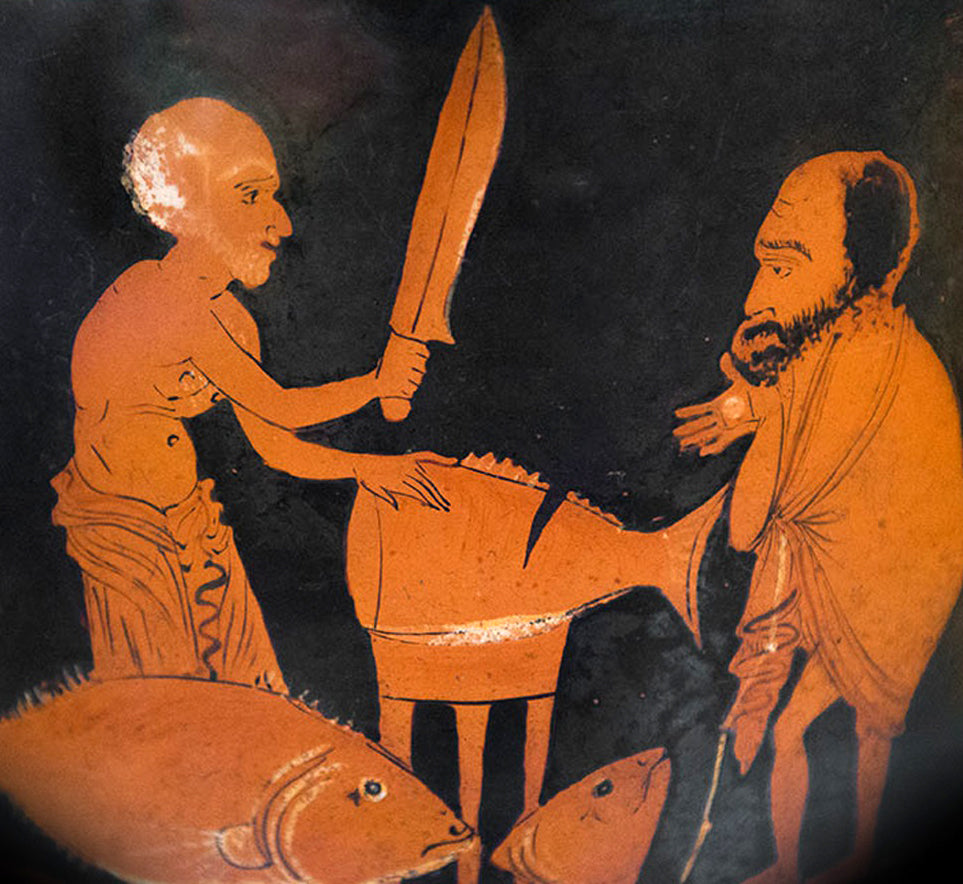Mythical Mysia

A long, long time ago, centuries before the arrival of Jesus Christ, when the fires of the Ancient Greek civilization were still burning bright and its cities were wealthy and numerous, the banks of the blue Propontis (now the Sea of Marmara) in Asia Minor were home to the region of Mysia.
The borders and the nature of its people and cities fluctuated over the course of the centuries, and the surviving texts sometimes contradict each other. Here, we will focus on the Archaic and emerging Classical periods of two of its cities in the 5th and 6th centuries BC.
While often eclipsed by their prolific neighbor, Lydia, the cities of Lampsacus and Cyzicus are still remarkable in terms of their numismatic issues. Bountiful and imaginative, we encounter a wide range of subjects on the obverse of the coins of the time, most commonly mythological or making reference to the gods (Greek, of course).
The stater
The very first coins originated right there in Asia Minor, with the very first staters being issued by Lydia around 600 BC.
The Lydian king Alyattes established a fixed value for staters made of electrum (a naturally occurring alloy of gold and silver) with their equivalent value in wheat.
Moneda Lydia
1/3 Stater, Before 546 BC, Sardes, "Collection Docteur F.", BC+
It was his son, Croesus, who switched to bimetallism with gold and silver (the ratios of gold and silver in electrum proving too variable).
The silver stater was then worth between 2 and 4 drachmas depending on the period. The gold stater, which quickly became a standardized value in the Hellenized regions, was worth 2 gold drachmas with a reference weight of 8.60 g, equivalent to between 20 and 28 silver drachmas.
However, some cities continued to mint their staters in electrum until much later, for example: Phocaea (Ionia), Mytilene (Lesbos), Lampsacus (Mysia/Troad), and Cyzicus (Mysia). The latter did not switch to silver until very late indeed – in the 4th century BC.
In the Archaic period, there is evidence of more than 1,500 cities and 500 kings issuing coins.
Within the respective city or kingdom, only the local currency was valid, and you had to exchange your money before you could trade there. The city or kingdom also levied a relatively high exchange fee of 5% and thereby increased its wealth.
A recessed square is typical of the reverse of the staters in the Archaic period. In contrast, the cities competed with their imagination on the obverse of the coins and employed numerous and multiple types of varied inspiration. Gods, heroes, animals, scenes from mythology... The only limit to their creativity was probably that of the summit of Mount Olympus.
Lampsacus and Cyzicus, in Mysia, were no exception to this rule.
The city of Lampsacus

Located to the east of the Troad and west of Mysia, in modern-day Turkey, the city of Lampsacus (Λάμψακος) occupied a strategic position on the south bank of the Hellespont (Dardanelles), connecting the Propontis (now the Sea of Marmara) to the Aegean Sea. It is famous, among other things, for being the birthplace of the Cult of Priapus.
Its well-chosen location allowed it to grow rich through trade, producing and exporting wine. Fishing was also a major industry, especially for tuna and mackerel. And, of course, like any self-respecting trading city, it minted its own coins.
Mysia Stater
480-450 BC, Lampsakos, Rare, Electro, NGC, BC+, SNG-France:1111
Here we see an electrum stater with the quadripartite recessed square typical of the Archaic period on the reverse. The obverse features a mythological feature engraved in an absolutely divine fashion: a protome* of Pegasus (Πήγασος).
The use of this figure, a white, winged horse born from the blood of Medusa, decapitated by Perseus, is probably not insignificant in this region. Although it is the symbol of the city of Corinth and appears to be well anchored in the Greek imagination, it would seem that the representation of the winged horse predates it and comes to us from Asia, from where it transited through Asia Minor.
In Eurasia, it is represented by the Etruscans with the winged horses of Tarquinia and by the Tatars with Tulpar, the winged horse hero of Kyrgyz mythology.

*Protome: Originally: a bust. Now: a representation of the foremost or upper part of an animal (or occasionally a human) used to decorate a piece of sculpture, pottery, etc. (OED)
The city of Cyzicus

Located on the banks of the Propontis (now the Sea of Marmara), the city of Cyzicus (Κύζικος) lay in the north of Mysia.
A rival city of Byzantium at one time, it was a member of the Delian League established by Athens.
The region was rich in agricultural, fishing, and mining resources. Just like Lampsacus, it also produced wine and exported fish in brine as well as wheat to Athens. On a less salubrious note, it was also home to a slave market.
From a numismatic perspective, Cyzicus was one of the most prolific cities. No fewer than 270 different designs are recorded for the obverse of electrum coins. Despite this diversity, the mint is easily identifiable thanks to the city’s emblem: a tuna, depicted in the field.
Mysia Stater
550-450 BC, Kyzikos, Rare, Electro, NGC, BC+, SNG-France:200
Mysia Stater
500-450 BC, Kyzikos, Electro, NGC, BC+, SNG-France:222-3
For posterity
In addition to the creative wealth of these cities in terms of issuing coins and the plethora of types, one also sees an art of engraving that borders on perfection, at the very least on excellence.
The engraving was performed directly on the metal of the die – in relief and in actual size. In other words, in a very confined space: around 20 millimeters. Just think of the precision of the movements required to achieve such beautiful engravings as those appearing on these coins and which have been passed down to us.
Some forgers tried to replicate this dexterity and expertise in the 19th century. Few came even close!
Iconography
- "Athena and Pegasus" by Theodoor van Thulden (1654) (Public domain)
- Map of Ancient Greece in the 5th century BC by O H 237 (2017) (license CC BY-SA 4.0)
- "Hero and Leander" by Pierre Paul Rubens (circa 1605) (Public domain)
- The winged horses of Tarquinia, photography by Paolo Villa (license CC BY-SA 3.0)
- A tuna salesman painted on a krater from ancient Italy (380-370 BC)
Sources
- https://www.bcl.lu/fr/media_actualites/communiques/2007/01/expo1/catalogue__Monnaies_grecques_____Monnaies_celtes_.pdf
- https://www.cairn.info/revue-dialogues-d-histoire-ancienne-2016-Supplement15-page-267.html
- https://www.persee.fr/doc/antiq_0770-2817_1946_num_15_2_2773
- https://fr.wikipedia.org/wiki/Mysie
- https://fr.wikipedia.org/wiki/Gr%C3%A8ce_antique
- https://fr.wikipedia.org/wiki/Stat%C3%A8re
- https://fr.wikipedia.org/wiki/P%C3%A9gase
- https://fr.wikipedia.org/wiki/Lampsaque
- https://fr.wikipedia.org/wiki/Cyzique



























